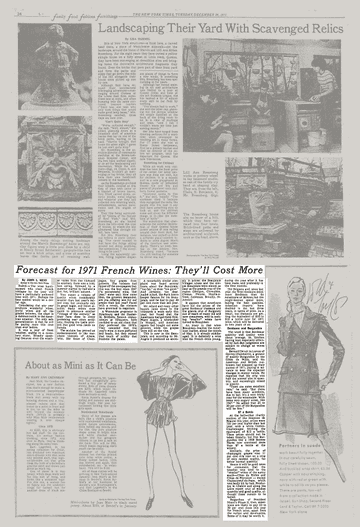A Journey Through French Wine Regions: Insights from NYT

Introduction to French Wine Regions
The French wine regions are among the most celebrated in the world for their rich history, diverse terroirs, and exceptional quality of wines. As wine enthusiasts continue to seek authentic experiences, understanding these regions becomes increasingly relevant. In recent articles by The New York Times, the emphasis on exploring both established and lesser-known areas has shed light on the evolving narrative of French winemaking.
Key French Wine Regions
France is home to several prestigious wine regions, each offering unique characteristics. The Bordeaux region, known for its robust red blends, remains a staple for collectors. Meanwhile, the Burgundy region boasts some of the finest Pinot Noir and Chardonnay, thanks to its specific microclimates and limestone-rich soils. The Loire Valley provides a diverse range of white wines, while the Rhône Valley is famous for its rich, spicy reds.
Recently, The New York Times highlighted the renaissance of regions such as Alsace and Languedoc. Alsace, located near the German border, is renowned for its aromatic whites, particularly Riesling and Gewürztraminer. On the other hand, Languedoc has transformed from a bulk wine-producing area to a focus of biodynamic and organic practices, gaining international acclaim for its high-quality wines.
Current Trends in the Wine Industry
As global wine consumers become more adventurous, there is a noticeable shift toward organic and sustainable practices. This trend is evident in many French regions, where vineyards are adopting eco-friendly techniques, aligning with the interests of environmentally conscious consumers. NYT’s recent feature on sustainable winemaking practices in regions like Provence demonstrates how traditional French winemaking can coexist with modern demands.
The New York Times has also pointed out the rising popularity of natural wines, which are produced with minimal intervention and additives. This movement is gaining traction particularly among younger generations who appreciate the authenticity and uniqueness of these wines.
Conclusion
French wine regions continue to resonate within the cultural and culinary landscapes of the world, as revealed through The New York Times. Understanding these regions and their evolving narratives offers readers a glimpse into the intersection of tradition and innovation in winemaking. As the industry embraces sustainability and caters to changing consumer palates, the future of French wines appears bright, promising exciting discoveries for both seasoned connoisseurs and new enthusiasts alike.





